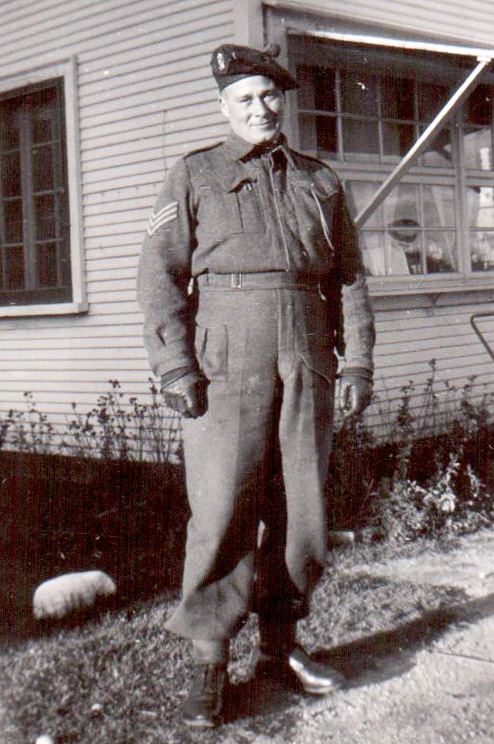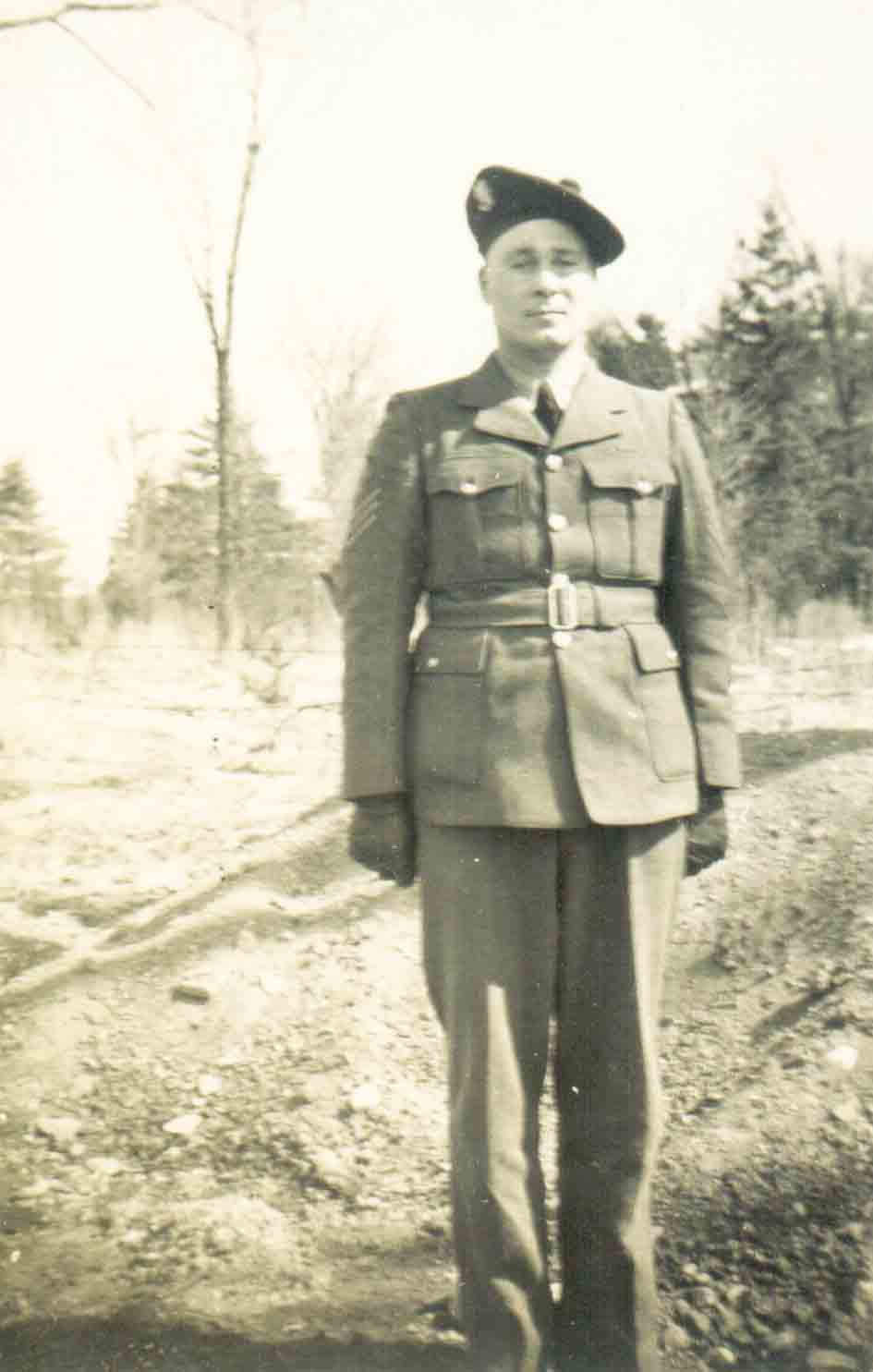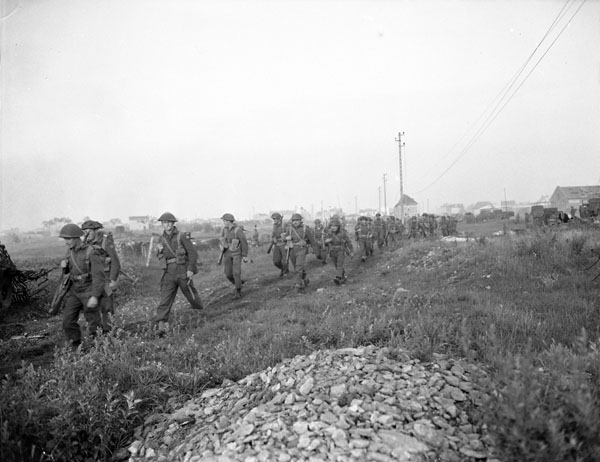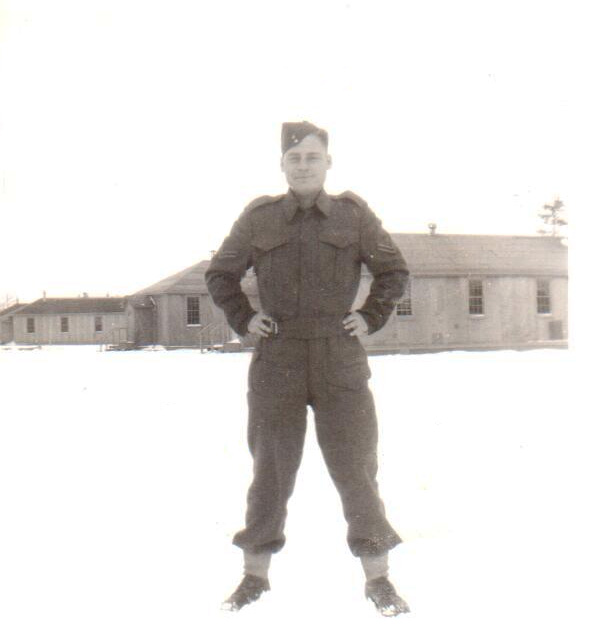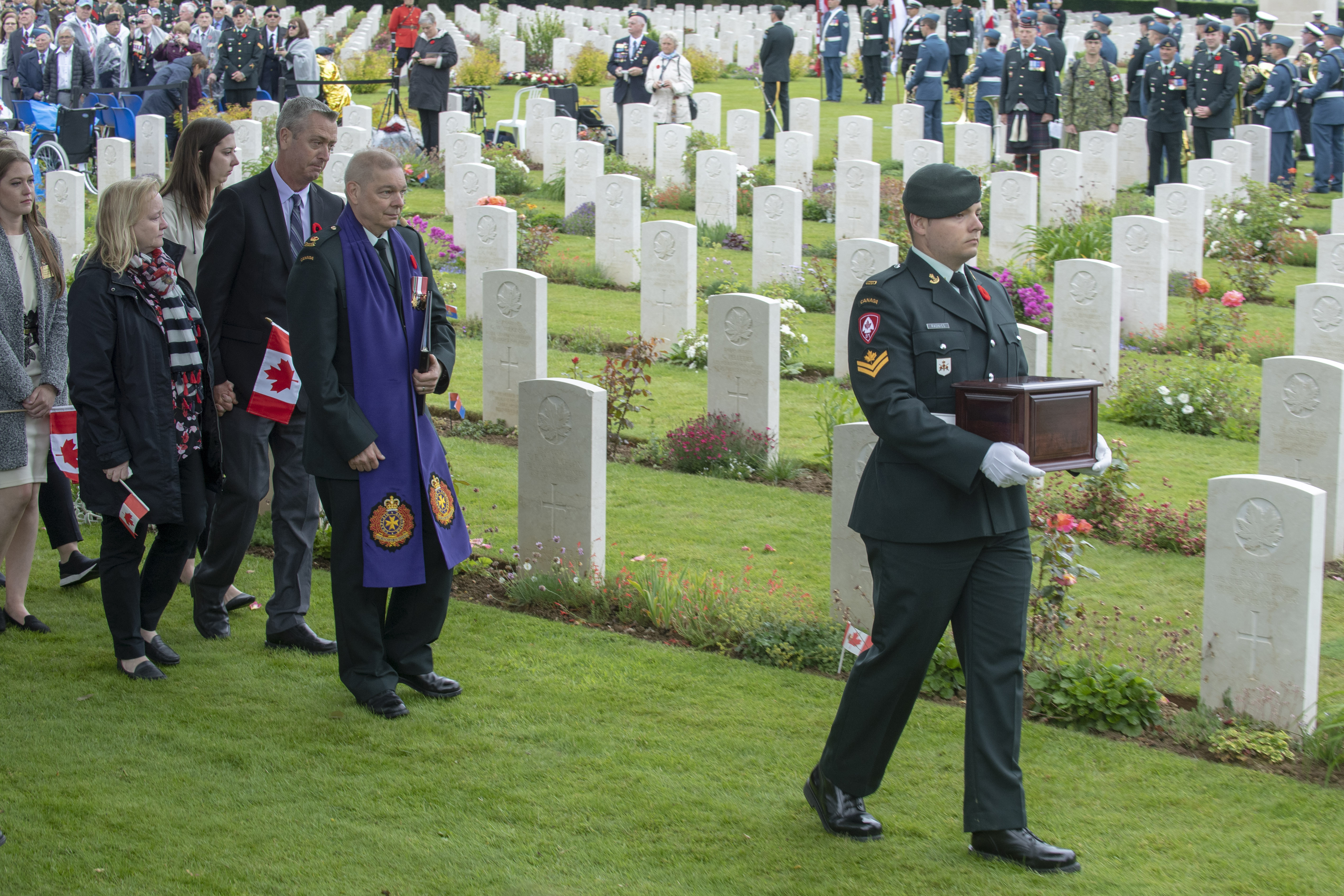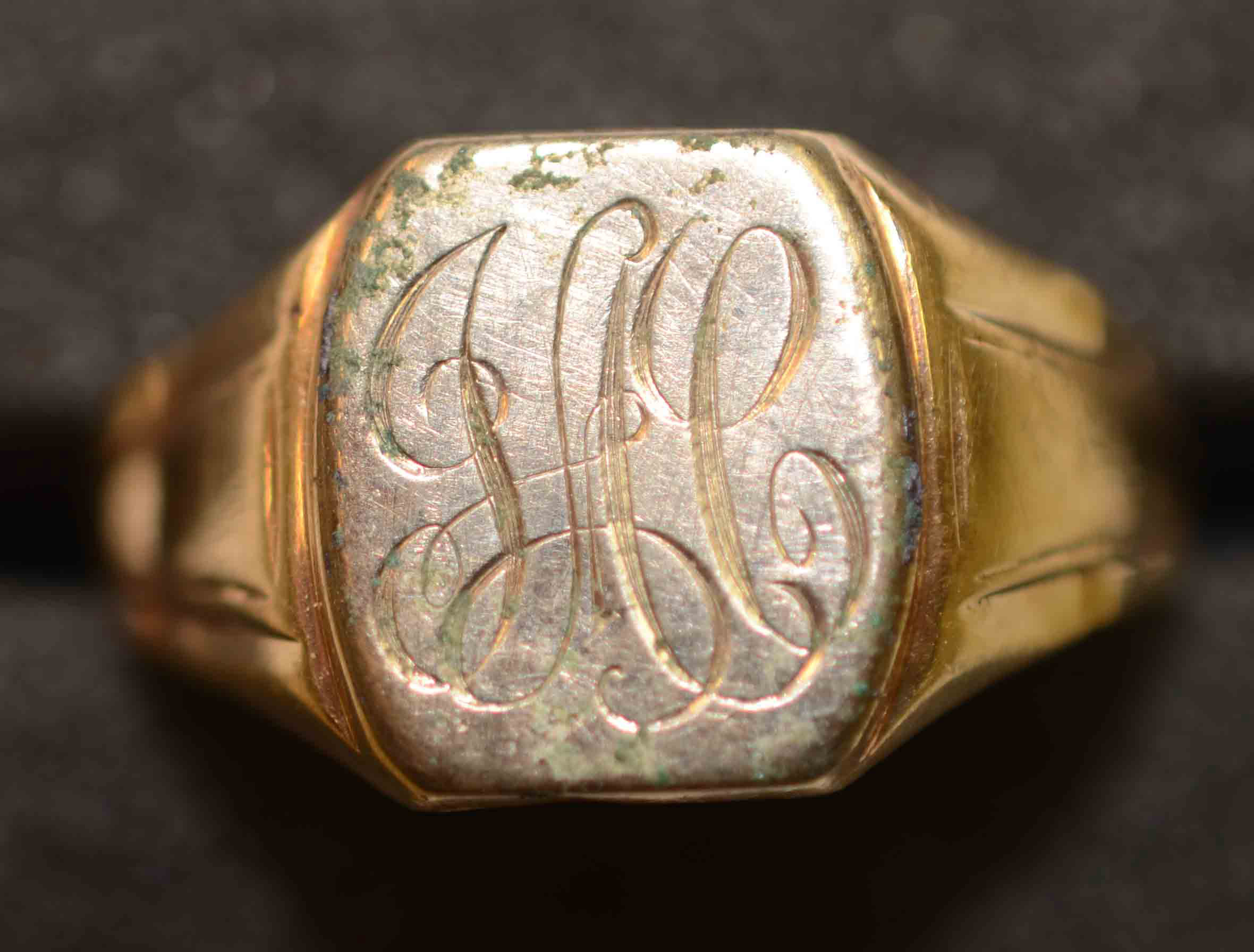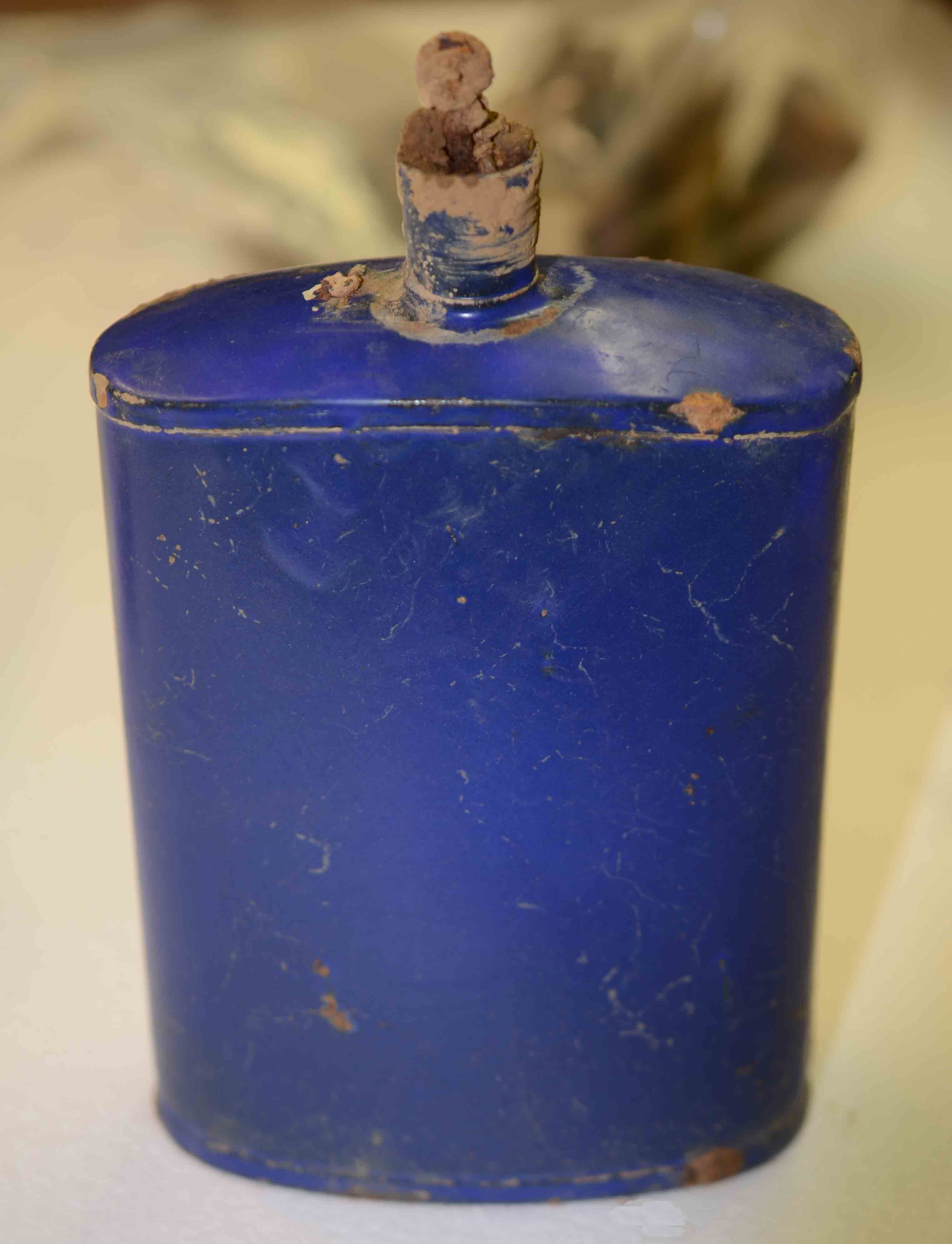Sergeant John Albert Collis
In January 2017, partial remains were discovered near Verrières, France. The Canadian Armed Forces confirmed the identity of these remains as Sergeant John Albert Collis.
- Born on 14 October 1915 in Lowville, Ontario
- Killed in action on 25 July 1944 at age 28
- Died a member of The Royal Hamilton Light Infantry (CASF)
- Partial remains discovered in early January 2017 near Verrières, France
- Buried in Commonwealth War Graves Commission’s Bretteville-sur-Laize Canadian Military Cemetery: Grave 15, Row C, Plot 15
John Albert Collis was born on 14 October 1915 in Lowville, Ontario. He was the son of George Collis and Florence May Collis (née Cooper) of Milton, Ontario, and had three siblings. John Albert Collis was a widower with one daughter when he enlisted but was granted authorisation to marry Dorothy Ruby Collis (née Campbell) on 14 October 1939, with whom he had a son.
Before enlisting, John Collis was part of the Non-Permanent Active Militia for 10 years. Upon enlisting with The Lorne Scots (Peel, Dufferin and Halton Regiment) of the Canadian Active Service Force (CASF) on 8 September 1939 in Brampton, Ontario, he was immediately appointed to the rank of Corporal. Corporal Collis was later transferred to the Irish Regiment of Canada on 31 August 1940.
Promoted to Sergeant in October 1941, he continued training and serving as an instructor in various locations across Canada until leaving for England in November of 1943. After a short time in the 4th Canadian Infantry Reinforcement Unit, he was posted to The Royal Hamilton Light Infantry, CASF in March of 1944.
As a member of The Royal Hamilton Light Infantry, he participated in the intensive training required to prepare the units of 2nd Canadian Division for their forthcoming operations in France. The Royal Hamilton Light Infantry landed in France in July 1944, and would participate in Operation SPRING, the Canadian Army’s contribution to a major offensive east of Caen. The 2nd Canadian Corps would lead, with 2nd Canadian Division on the right attacking May-sur-Orne and Verrières and 3rd Canadian Division attacking towards Tilly-la-Campagne. As part of 2nd Division, the Royal Hamilton Light Infantry’s primary objective was to capture the village of Verrières. When the assault was launched on 25 July 1944, the Royal Hamilton Light Infantry faced determined German resistance and a counter-attack led by tanks. After suffering heavy casualties throughout the day, The Royal Hamilton Light Infantry received air support from the Royal Air Force and help from British tanks to hold their position on their objective. They were the only Canadian regiment to do so. However, success came at a cost, the regiment suffered a large number of casualties. It was during this operation that Sergeant John Albert Collis was killed in action at the age of 28.
Following his death, Sergeant Collis was buried in a makeshift grave south of Caen in the region of Calvados, France. Later, his remains were moved to their final resting place in the Commonwealth War Graves Commission’s Bretteville-sur-Laize Canadian Military Cemetery. Due to the chaos and confusion of war, only part of Sergeant Collis’s remains were buried in his final resting place at grave 15, row C, plot 15.
In early January 2017, the partial skeletal remains of an Allied soldier were uncovered near the village of Verrières, France south of Caen. These remains did not have any national identifiers but due to their location and the presence of Commonwealth military equipment, it was determined that they likely belonged to a Canadian soldier.
The Canadian Forces Forensic Odontology Response Team were able to do a dental analysis to help with the identification. Through historical, genealogical, anthropological, archaeological, and DNA analysis, with the assistance of the Canadian Forces Forensic Odontology Response Team, and the Canadian Museum of History, the Casualty Identification Review Board was able to confirm the identity of one set of remains as those of Sergeant John Albert Collis in March 2019.
The reunification of the partial remains with the grave of Sergeant John Albert Collis took place on 7 June 2019, at the Commonwealth War Grave Commission’s Bretteville-sur-Laize Canadian War Cemetery south-east of Caen, Calvados, France as a part of the Government of Canada event commemorating the 75th anniversary of D-day and the Battle of Normandy. Members of his family, as well as representatives from the Government of Canada, French dignitaries and the Canadian Armed Forces were in attendance.
For further information on Sergeant John Albert Collis, you can consult his personnel file at Library and Archives Canada.
More on casualty identification
Page details
- Date modified:
